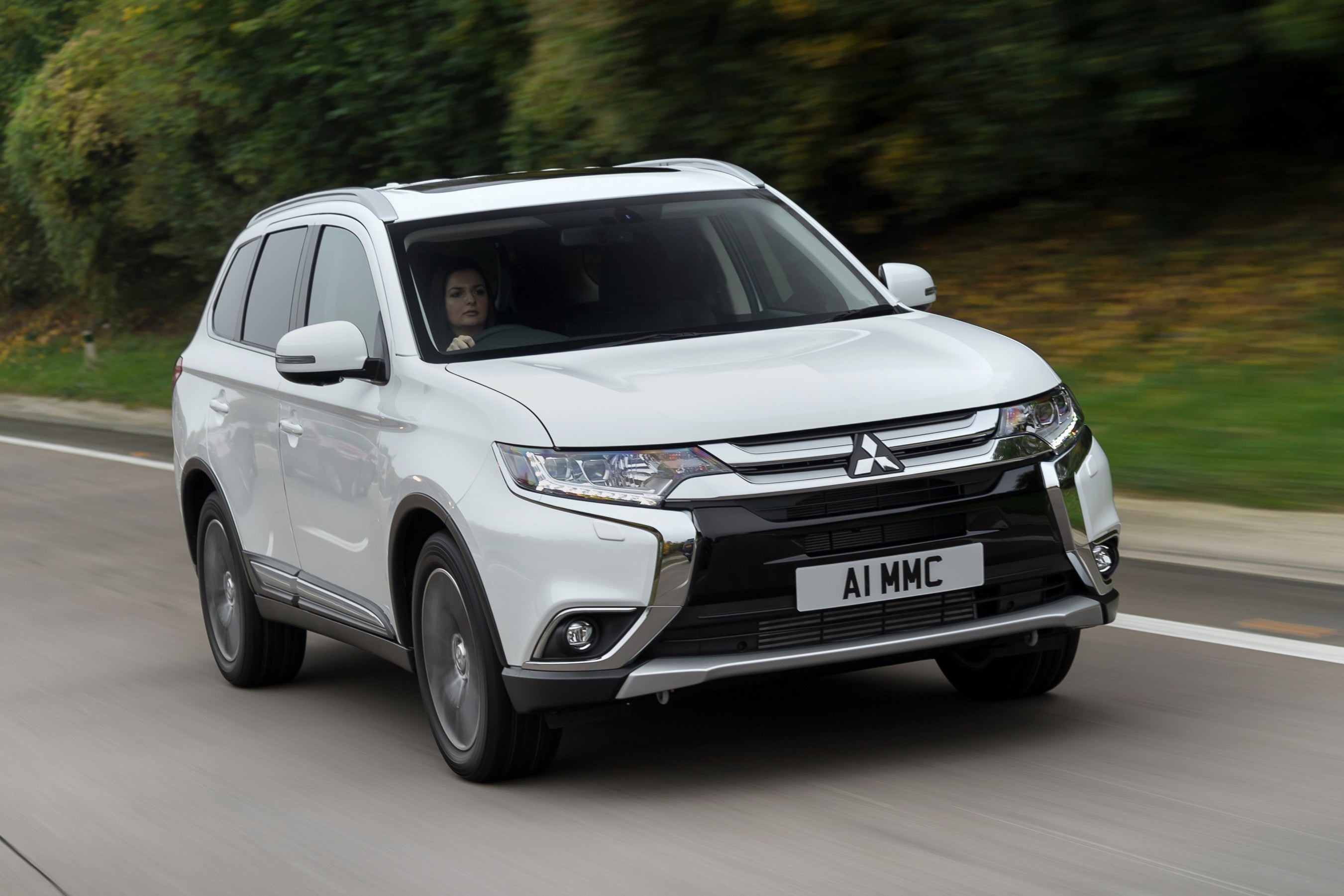Mitsubishi Outlander (2012-2021) Review
Written by Andrew Brady
Quick overview
Pros
- Generously equipped
- Huge boot in petrol and diesel form
- Plug-in hybrid version was novel in its time
Cons
- Roly-poly handling and mediocre refinement
- Interior design is dated and lacks quality
- Plug-in hybrid has only five seats
Overall verdict on the Mitsubishi Outlander
"The Mitsubishi Outlander was one of the most affordable seven-seat SUVs to come with both four-wheel drive and an automatic gearbox on every model. There were petrol and diesel versions, but it's really the Mitsubishi Outlander PHEV that most people buy. You'll struggle to find a more affordable used plug-in hybrid SUV."
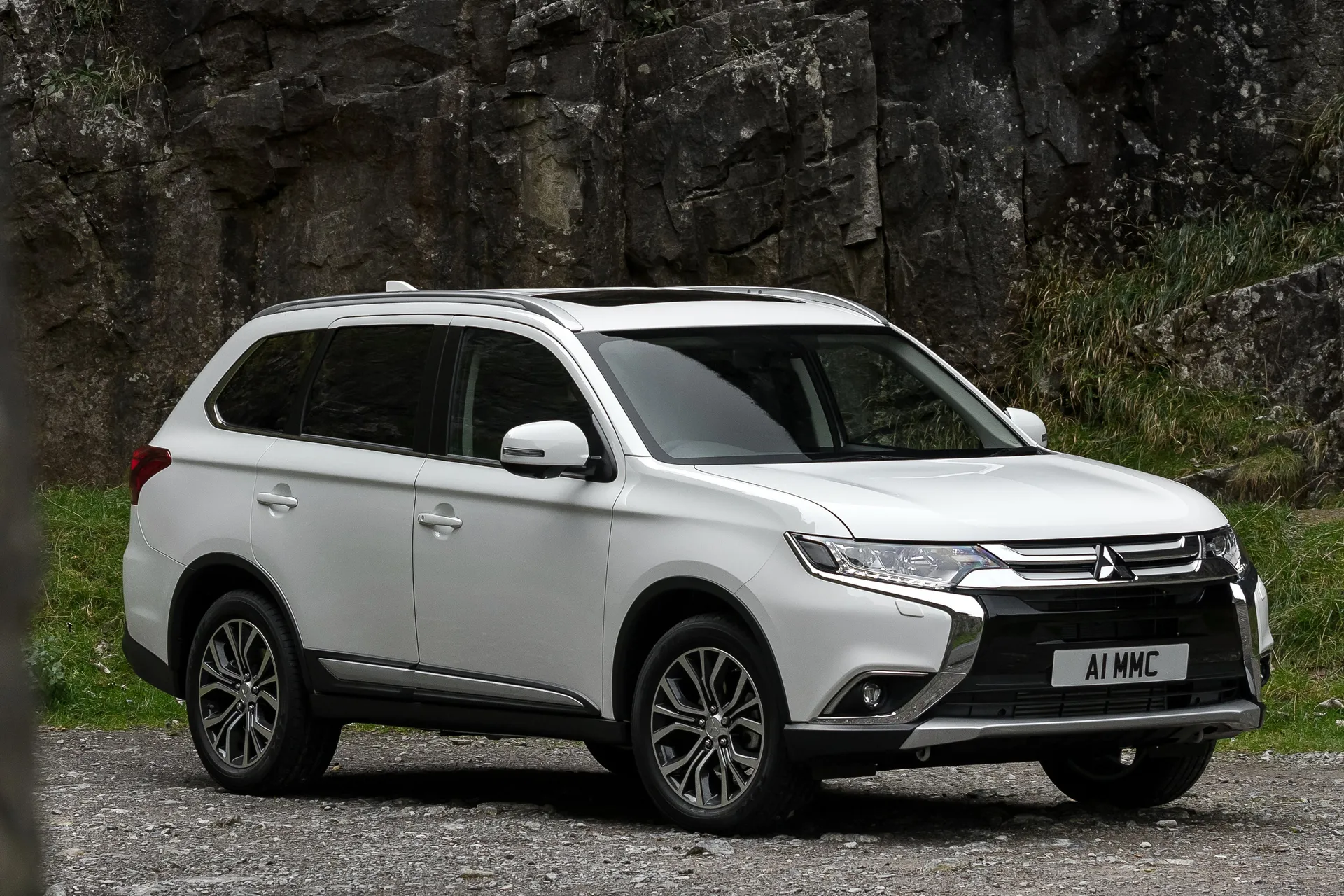
Is the Mitsubishi Outlander the best value used plug-in hybrid (PHEV) SUV on the market? And is the Outlander PHEV the only version worth bothering with? We'll consider the now-defunct model with hindsight in this Mitsubishi Outlander review.
When this generation of Mitsubishi Outlander, launched in 2012, it was a fairly good value and rugged, but otherwise unremarkable, family SUV with a torquey 2.2-litre diesel engine, a choice of manual and automatic gearboxes, and standard all-wheel drive. With advanced 4x4 systems such as a locking differential, and a braked towing capacity of 2000kg, it was loved by caravanners and found a small following as an off-roader with creature comforts.
Really, though, it only became a mainstream success when the Mitsubishi Outlander PHEV was made available in 2014. That came with a petrol engine mated to an electric motor and battery pack. It all sounds familiar in 2022, but back then it was very novel - in fact, the Outlander PHEV lays claim to being the world's first plug-in hybrid SUV.
Why was it so successful? Well, if we're being honest, due to the massively reduced company car tax liability of plug-ins allowing business users to save thousands every year. Government grants reduced the price, there was free road tax and exemption from some city tolls such as the Congestion Charge in London also made it appealing to private buyers or leasers.
But of course, the Mitsubishi Outlander PHEV had some appeal beyond the raw numbers. It could be charged like an electric car, yet didn't rely on the thinly spread and unreliable public charging networks at time because, when the electric range (about 25-30 miles) was depleted, the petrol engine fired up and it became a 'normal' car.
The Outlander PHEV was great for the school run, with around 25 miles from a full charge on electric power making it super smooth, quiet and local emission free. However, when the petrol engine kicks into life things aren't as rosy - it's a two-tonne SUV, after all - with a noticeable thirst for fuel and a fair bit of noise as the engine charges the battery and powers the wheels.
In late 2018, the Mitsubishi Outlander was improved: the PHEV gained a bigger engine plus a new battery pack and electric motor to improve range, performance and efficiency. The diesel was dropped, and in came a cheaper petrol engine mated to a CVT gearbox. More on that later, but by this time rival companies had caught on to the plug-in hybrid game and there were more competitive models around.
Keen drivers will find very little delight in any version of the Mitsubishi Outlander: all had wallowy handling, remote steering and a surprising amount of wind and road noise. The ride was fairly comfortable, however, and proper four-wheel drive meant it performed better in the rough stuff than more road-biased SUVs.
Putting the engines and driving experience to one side, petrol and diesel versions of the Mitsubishi Outlander are very roomy and have seven seats as standard. Fold the third row away and you get a huge load space, plus an almost van-like capacity with all five seats folded. However the plug-in hybrid version has batteries which eat into the boot space, making it five seat-only.
You also get a generous level of standard equipment even on base versions. However, its dated design and durable but rather crude plastics make the Outlander feel like a budget option, even in the later updated models. Where the PHEV has low running costs and made for a cheap company car, the petrol is quite the opposite, and we can't see any reason to choose one over a wide range of talented seven-seat rivals from other brands.
Sure, the Mitsubishi has impressive seating flexibility and looks good value, but it is so fundamentally hamstrung by its engine and gearbox that literally any other SUV will be easier and nicer to drive. If you're looking for an affordable plug-in hybrid, an Outlander PHEV is a fine option, but the others aren't recommended.
heycar has 1000s of used cars for sale, including a wide range of Mitsubishi Outlanders for sale, including Outlander PHEVs for sale.
Is the Mitsubishi Outlander right for you?
The conventional Mitsubishi Outlander leaves us a little stumped. It's one of the few cars that is genuinely impossible to recommend unless you simply must have an SUV with a Mitsubishi badge on the bonnet that isn't a hybrid. This softens as a used buy, because it is clearly more affordable than similar alternatives were when new.
That means the only real thing it has going in its favour is the fact that it's one of the cheapest ways to combine a four-wheel drive system, seven-seats, and an automatic gearbox, but boy does it feel like a budget option on the inside. 2018-on models were improved somewhat, but the petrol engine that replaced the diesel is a poor option overall.
The relative mechanical simplicity of the Outlander, and the proven nature of its engine and gearbox - it had a five-year warranty from new - should make it a hassle free ownership prospect, but then so is a Toyota RAV4.
The Mitsubishi Outlander PHEV is a different story as you'll struggle to find a similar plug-in hybrid SUV for the same money in the used market.
What other cars are similar to the Mitsubishi Outlander?
The surging popularity of SUVs over the last decade means there are a plethora of seven-seat alternatives to the Mitsubishi Outlander. For hatch-like handling, a stylish cabin and cheap insurance, the Skoda Kodiaq is a great option, and well worth the extra cash as a new or used buy.
If you want a bit more passenger space, the Peugeot 5008 has fantastic seating flexibility, a luxury interior and stylish design, plus competitively low running costs if you pick one of the punchy diesel versions. For off-roading, a premium badge and long spec list, look no further than a Land Rover Discovery Sport. This car has class-leading capability in all kinds of terrain, and facelifted versions have a vastly improved interior, though it will be substantially pricier.
For those keen to avoid diesel power, then a five-seat Toyota RAV4 hybrid is a very relaxed performer. It comes with a long warranty, enormous boot, and surprisingly tidy handling, and all with the potential for more than 50mpg. The Lexus NX is a posher (yet pricier) alternative.
The Outlander PHEV didn't have many alternatives early on in its life, but there was a Kia Niro PHEV introduced in 2017 that's another plug-in SUV. Other, smaller or non-SUV models to consider include the VW Passat GTE, the MINI Countryman PHEV or Citroen C5 Aircross PHEV.
Comfort and design: Mitsubishi Outlander interior
"The Outlander is functional rather than fashionable inside, and it's not hard to tell that you're sitting in a cabin that has been hanging around for several years longer than many of its newer rivals have even been on sale. Still, it's well-equipped."
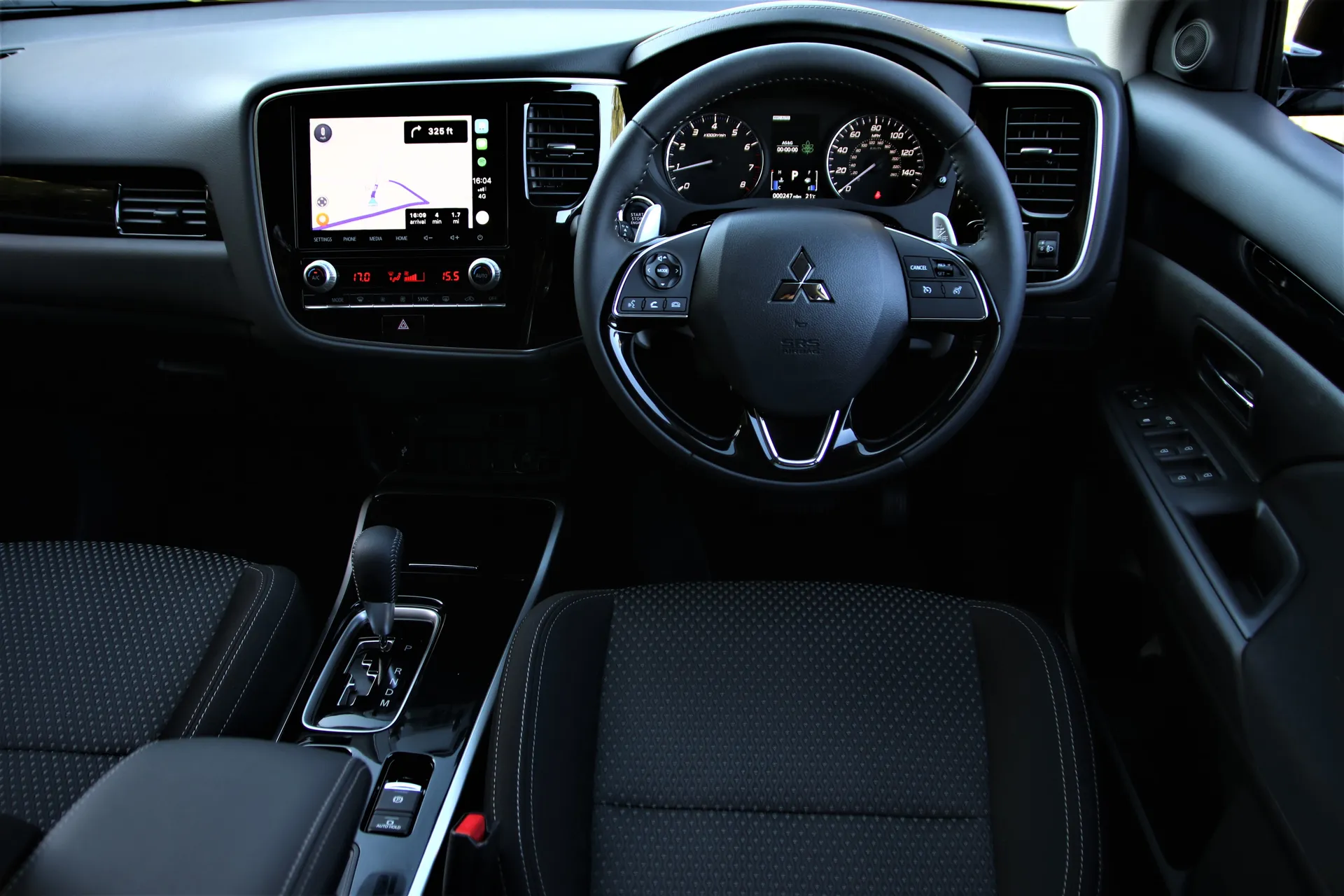
The Mitsubishi Outlander's cabin features drab looking black plastics that are durable but fairly unyielding, and all the controls are bunched together onto a fairly small centre console.
The dash rises quite high to meet your eye-line, but it's crowded with small, fiddly buttons that are as tricky to read as they are to hit with any confidence while you're driving. Normally we praise a car for avoiding burying every function into a touchscreen these days, but the Outlander is too far the other way.
The dials are nice and clear, though, and the LCD screen nestled between them is also fairly easy to read, but the back-lit orange climate controls will have you squinting; we preferred their design before the later update.
The driving position is okay, with lumbar support for the driver to help alleviate backache on road trips, but any really tall people may struggle to get comfortable, since the seat doesn't lower itself far enough into the floor.
It's a similar story with the steering wheel. Although you can move it towards you and up or down, the range of movement is fairly narrow, so it's harder to find a compromise if you don't feel comfortable straight away.
With just two pedals, there is plenty of space for a wide footrest for your left foot, and the high-set seat gives you good visibility in all directions. Still, this is a large vehicle, and the notable absence of a set of parking sensors from the spec sheet of pre-facelift cars will have alarm bells ringing for anyone without a very wide drive. This was addressed in the updated versions, with cool features such as a 360-degree camera available.
Quality and finish
Over the course of its life, the Mitsubishi Outlander has had more facelifts than a jaded soap actor. With each surgery it gets a new bit of cabin trim or tweaked switchgear, but it still feels a pretty crude, bleak place to spend time.
While we admire Mitsubishi for building an interior that feels tough enough to withstand even the fiercest attacks by rampant toddlers amped-up on sugar, a touch more luxury and style wouldn't go amiss. It will no doubt stand the test of time well (since it already has) but all of its rivals feel more expensively finished.
There are half-hearted nods to luxury, with a leather steering wheel, some gloss black and silver trim, and metal-effect gear shift paddles. The top of the dash is covered in a fairly dense, squidgy material too. Top spec versions get hard-wearing leather seats , but the switchgear is more pick-up truck than posh SUV.
It's not a million miles away from, for example, the previous-gen Kia Sorento or the Renault Koleos, but firmly at the budget end of the spectrum. The Volkswagen Tiguan Allspace and Peugeot 5008 are both more welcoming and luxurious inside.
Infotainment: Touchscreen, USB, nav and stereo in the Mitsubishi Outlander
From 2015-on, all Mitsubishi Outlanders came equipped with an 8.0-inch touchscreen display that's been slotted directly into the dash just above the climate control panel. On entry-level Design models, this system includes a DAB digital radio, Bluetooth and Android Auto and Apple CarPlay connectivity, but the graphics and icons look and feel old hat.
You get some audio controls mounted to the steering wheel, and a USB port for charging your devices. Still, if kids in the back need to charge up their tablets, only the pricier Exceed model gets sockets in the rear row.
Upgrading to this model means you'll get sat-nav, but it's quite rudimentary, counter-intuitive, and slow to use.
To be honest, it's easier to bypass the system altogether and just use the mapping apps from your phone, via the software mentioned above. The standard software is dated, with blocky 2D icons, hit-and-miss responses to your inputs (even when prodding it quite firmly), and a row of touch sensitive buttons that are far too small.
The display has thick black bezels bordering it that betray its aftermarket design, and most rivals have more sophisticated and intuitive infotainment setups, and usually include sat-nav even on the mid-range versions.
You get six speaker audio as standard on both trims, but the sound quality is tinny at best. Not that you could do anything to improve it when the car was new as there was no option box to tick.
The plug-in hybrid has a few bespoke menus and displays, showing the charge available, the speed of a charge and various efficiency data points. You also get a different instrument design to take into account EV mode, plus a slightly confusing array of drive mode buttons.
Space and practicality: Mitsubishi Outlander boot space
It might bit a little rudimentary inside, but it’s hard to argue with the Mitsubishi Outlander’s versatility. The middle row of seats slide and recline, and even the front passenger seat folds flat, which comes in handy when carrying longer loads.
Adults will be happy in any of the front five seats, but the third row (which stows into the boot floor when not in use) is better suited to kids, since knee room is tight, and access is tricky. Older kids will be able to clamber inside easily enough, and there are cupholders and storage trays built into the rear wheel arches.
This doesn't apply to the plug-in hybrid model, which loses the third row of seats due to the batteries under the boot floor taking up space. This'll no doubt be a frustration for some people, but it was common at this time - even bigger, much posher models such as the Audi Q7 lost their rearmost seats in hybrid form.
Helpful storage cubbies are provided whichever row you're sat in, with bottle holders in the door pockets, and a small tray in front of the gear selector, although the glovebox is rather disappointing. It's possible to fit three across the second row without jockeying for position too much, and the footwells are clear from obstruction.
If you have a younger family, Mitsubishi provides ISOFIX mounting anchors in both of the outer seats in the middle row, and claimed you can get two rear-facing child seats (of any size) in without any trouble. It is possible to squeeze a slender adult in to sit between them if needed. Still, a lot of seven-seaters can carry more than two baby seats, and although you could fit a booster seat to the third row, it's not the most secure.
Boot space is another real strength; there's absolutely loads of it. In five-seater mode, the Mitsubishi Outlander's 591-litre load bay beat the contemporary Hyundai Tucson and Toyota RAV4, expanding to a cavernous 1608 litres in its two-seater layout. This does reduce quite to 463 litres in the Mitsubishi Outlander PHEV.
While that's impressive, and the seats tumble easily into the floor (leaving a nice flat shelf) bear in mind that with all seven seats in place you'll only be able to squeeze a few shopping bags into the back, nothing more (again, not applicable to the PHEV).
The powered tailgate on top-spec Exceed models is useful for when you're carrying heavy bags, but as with many seven-seater SUVs, you're better off keeping it in five-seat mode most of the time to keep the big boot. If you need to regularly carry several passengers, you're better off with an MPV, such as the SEAT Alhambra.
The Outlander is very similar in size to the Skoda Kodiaq at 4695mm long, 1810mm wide (excluding mirrors) and it's 30mm taller at 1710mm.
Handling and ride quality: What is the Mitsubishi Outlander like to drive?
"Driving the Mitsubishi Outlander with anything but the gentlest, smoothest inputs can be a rather unnerving experience. The big body leans over heavily in corners, and lurches back and forth when you brake or accelerate too hard. Later models were better."
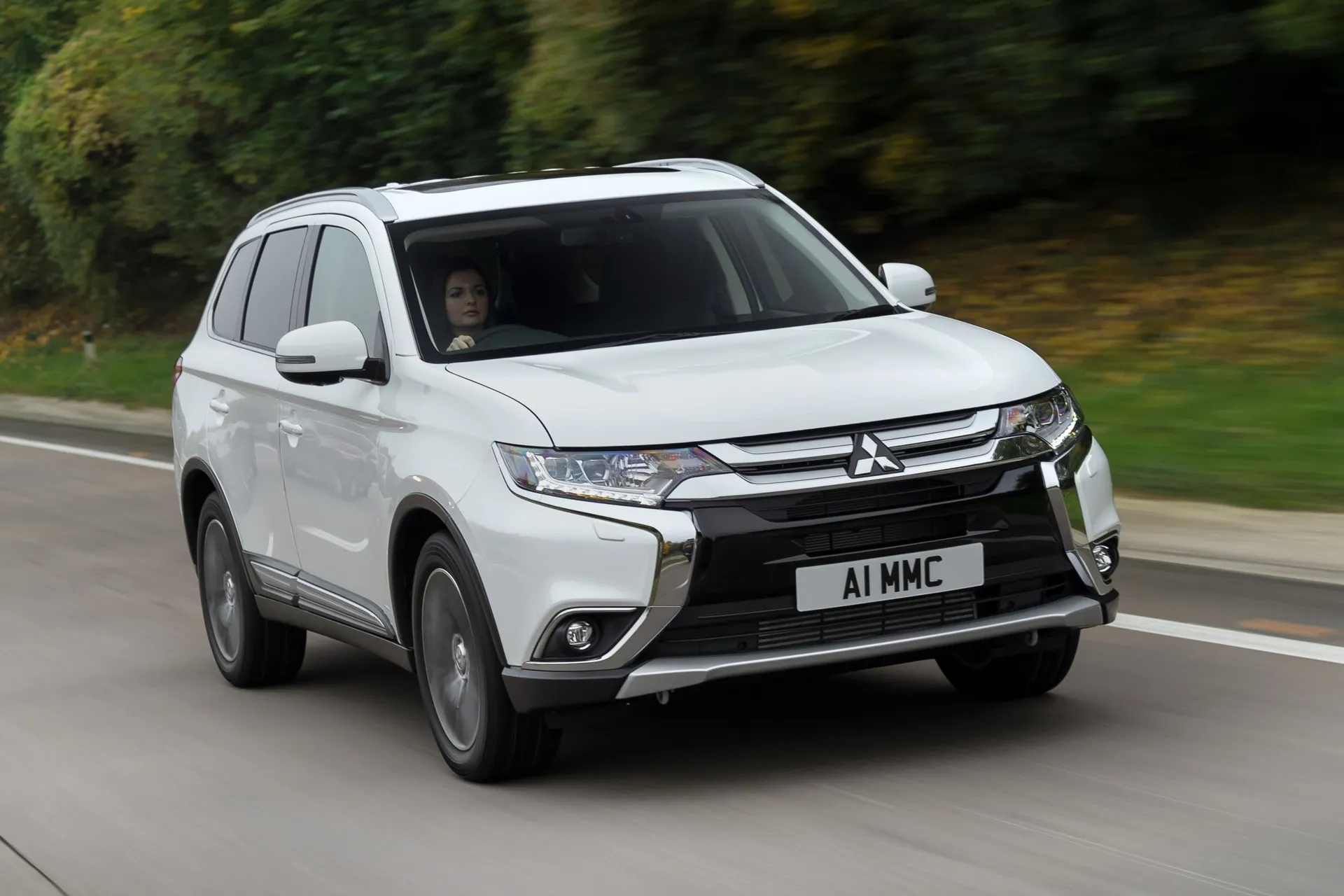
The steering, which is surprisingly light around town, fails to weight up convincingly at higher speeds, with a fair amount of play in the wheel around the straight-ahead, so it's harder to place the car with any real confidence.
True, you do get the reassurance of extra grip from the four-wheel drive system. This has several different modes, including a part-time 'Eco' setting that helps save fuel, and a full lock-out mode for light off-roading.
Even with the additional traction of four driven wheels, we would avoid chucking the Mitsubishi Outlander into corners.
Instead, it's better to ease up and drive it in a steadier fashion. Do so, and you'll appreciate the soft ride, which makes the Mitsubishi a comfortable cruiser, and soaks up big bumps and undulations quite well. It's not a very sophisticated suspension setup though, so it can bounce over dips and crash into pot-holes. Earlier PHEV models didn't ride as well because of the extra weight, and they still rolled around quite a bit in the bends.
It's worth noting that the later the model of Mitsubishi Outlander you buy, the better it's likely to ride and handle. That's because Mitsubishi made suspension and body improvements (once in 2015 and another in 2018) to make the car more competitive with newer rivals. However, it never challenged the class best in any guise.
A Peugeot 5008 is better at absorbing the punishment frequently dished out by our poorly surfaced roads. Meanwhile, a Skoda Kodiaq or Toyota RAV4 both feel more nimble and eager to change direction quickly.
Finally, if you need a proper mud-plugging SUV (as some buyers do), then a Land Rover Discovery Sport will be able to tackle terrain where the Mitsubishi will be unable to follow without tearing off its plastic bumpers.
What engines and gearboxes are available in the Mitsubishi Outlander?
Mitsubishi introduced the plug-in hybrid Mitsubishi Outlander in 2014, and it quickly became the most popular model.
The earliest Outlander PHEV used a 2.0-litre petrol engine mated to a CVT gearbox, a battery pack and two electric motors. The electric motors are spread across each axle to give it four-wheel drive, and it'll do up to 78mph in electric-only mode. Combined power was 203PS, which sounds like plenty until you remember it weighs around 1900kg.
After 2018 the Mitsubishi Outlander PHEV's petrol engine was upgraded to 2.4 litres, the rear electric motor became more powerful and the battery size was increased by 10% to 13.8kWh. Combined output was boosted to 224PS, and the newer version could go up to 84mph without waking the engine.
The 0-62mph sprint improved from 11.0 seconds to 10.5 with the facelifted version, and it was certainly quieter and a bit more effortless. But neither are even on nodding terms with being fast - smoothness and efficiency are the key criteria here.
Refinement is good when you're cruising round, but the earlier 2.0-litre model gets particularly noisy when you ask for full performance and the engine revs start screaming. The later 2.4-litre model was a bit more hushed thanks to improved soundproofing.
You get no less than five levels of regenerative braking on the Outlander PHEV, and this can be controlled via steering wheel-mounted paddles. It's something we mostly take for granted today but was a brilliant system when it came out, although the actual brake pedal has a bit of a grabby action.
In the standard car, the brand has flip-flopped between petrol and diesel. When it launched, it came fitted with a 2.2-litre four-cylinder diesel with 147PS, four-wheel drive, and a choice of manual or automatic transmission. It wasn't a particularly cultured or potent engine, but it suited the car's rugged image well, with enough grunt for hauling around heavy loads or towing, and acceptable running costs, even if the PHEV was a bit cheaper.
In 2018 the company did a complete 180º shift, dropping the diesel from the line-up, and replacing it with a 2.0-litre petrol with a similar amount of power but half the mid-range torque, paired up with a CVT automatic.
If you're thinking a wheezy petrol engine seems like an odd choice for a lumbering, heavy off-roader, we'd be inclined to agree with you. The 2.0-litre is gutless, incredibly slow (even before you start to load it up) and its CVT gearbox whines loudly when you try to accelerate, spoiling refinement, frankly it's a very unhappy union.
Despite its stunted performance, the running costs are shockingly high. The low price and cheap insurance is offset by the engine regularly returning less than 30mpg in traffic, especially if you're carrying five on-board. It's a pretty poor engine and gearbox combination overall, then.
Refinement and noise levels
The Mitsubishi Outlander is not the most relaxing motorway cruiser. In fact, the cabin is poorly isolated. It'll let in more road, wind and tyre noise than any rival we could care to mention, making it tiring to drive over longer distances.
A lack of sound insulation isn't the only thing disturbing the peace inside the cabin either. The only gearbox option is the CVT automatic, which has its quirks. It's exceptionally smooth as long as you are just trundling around at low speeds, but as soon as you demand a bit more forward momentum it sends the revs sky high.
In the Outlander PHEV, this is less of an issue because the car is often driving in electric power, and it's only when you ask for full performance that revs start soaring. Again, later models were quieter and more effortless.
Petrol engines are normally smoother than their diesel counterparts, but the 2.0-litre unit in the Outlander is coarse and strained. It sounds particularly rough under load, and sends a shiver of vibration up through the steering wheel. Any number of similarly powerful turbocharged rivals deliver more pace with less ruckus.
We cannot imagine how loudly it would drone away if you tried using the Outlander's full towing capacity, or had six burly adults on-board and attempted to drive up any sort of steep inline. Pass the earplugs time.
The older diesel model offers no balm to your tenderised eardrums. It too is an old-fashioned and clattery engine that felt more agricultural than most, making an especially loud din when cold or getting up to speed.
Safety equipment: How safe is the Mitsubishi Outlander?
On one hand, the Mitsubishi Outlander appears to be a very safe way of transporting your family. It comes with a full set of seven airbags (including a knee bag for the driver), and all the mandatory safety items required by law at the time
That means electronic stability control to help you stay in control if the vehicle starts to slide, tyre pressure sensors to warn you of punctures, seat belt monitors, and a hill start assistant for making a clean getaway.
All of that secured the Mitsubishi a five-star score from independent safety testers Euro NCAP in a crash simulation, with high scores for both adult and child occupant protection. So it sounds like you can rest easy knowing the car has your back in a collision then, right? Well, not exactly. That result is from back in 2012, and it's fair to say that modern safety systems have come a long way since then, and the test is harder too.
If you go for the higher specification Exceed, then you do get a few items of active safety gear. These include 360º parking cameras, blind spot monitors to alert you to undertaking motorbikes, and rear cross traffic alert. The latter can detect any cars passing your bumper as you reverse out of a space, and remind you to brake.
However, if you don't go for the plug-in hybrid model, there was no option to fit vital safety gear like automatic emergency braking (AEB), adaptive cruise control, or even parking sensors. We would cut the Outlander some slack as its an older model, except for the fact that you can get all of these aids on the PHEV, as you can on many of its used car rivals.
MPG and fuel costs: What does a Mitsubishi Outlander cost to run?
"The Mitsubishi Outlander PHEV's efficiency figures make a mockery of the standard petrol and diesel versions, but you need to plug it in regularly to make the most of them."
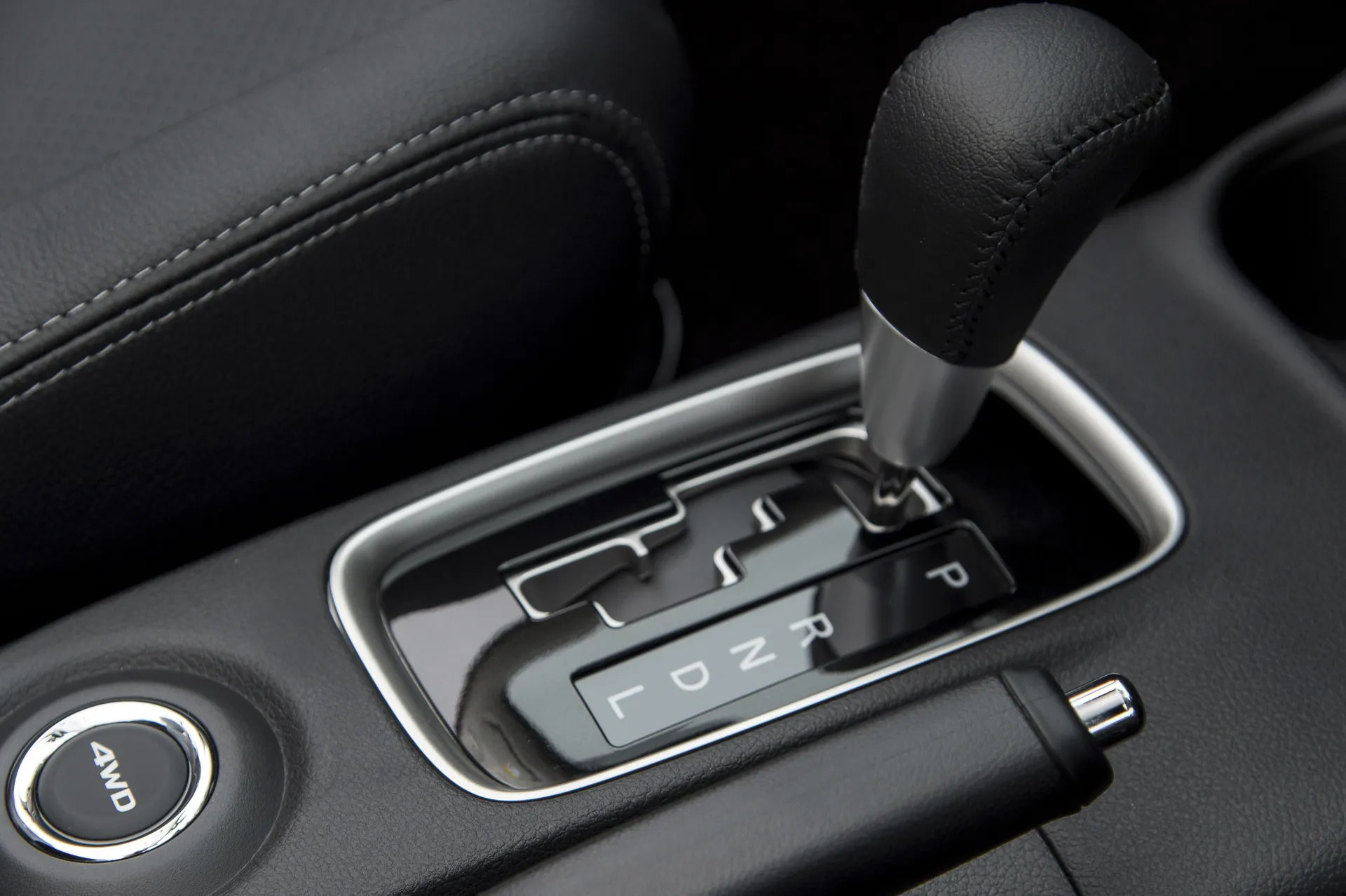
The official efficiency figures for the Mitsubishi Outlander PHEV vary depending on which version you buy, but all are still impressive today and certainly caused a stir when it was launched.
Earlier PHEVs has a claimed combined fuel economy figure of 148mpg and CO2 emissions of just 44g/km. Oddly, the later facelifted version revised that down to 141mpg and 46g/km despite the improvements. That's because it was tested on the more stringent WLTP test cycle rather than the old NEDC one.
Our usual caveats with plug-in hybrid models still apply. Those figures are achievable if you keep the vast majority of your journeys within the car's 25-30 mile all-electric range and charge it up regularly. If you're on a longer journey, or haven't charged it up in a while, the MPG will plummet - expect no more than low 30s MPG from a non-charged Outlander PHEV.
Still, it gets even worse in the pure petrol Mitsubishi Outlander. Pairing a weedy non-turbo petrol engine, automatic gearbox and four-wheel drive system to a lumbering heavy car, and you've got all the best ingredients for inefficiency. Officially it returns a claimed combined 32.5mpg, and emits 196g/km.
We predict something more like 25mpg if you fill those seven seats or are hauling a boot full of gear. The old diesel wasn't much better, with our Real MPG owners reporting an average of just 36mpg for the automatic.
How reliable is the Mitsubishi Outlander?
The mechanical simplicity of the Outlander and the proven nature of its engine and gearbox, plus a long five-year warranty from new, should mean problems on used cars will be minor, but issues with the infotainment screen and particulate filters on diesel models can occur.
It's also worth bearing in mind the plug-in hybrid model has additional complexity in its battery and electric motor setup. While we've not heard of expensive common issues, you'll want to make sure the battery is still holding its charge and delivering a decent range as that'll cost thousands to replace.
In the latest HonestJohn.co.uk Satisfaction Index, Mitsubishi hovered third from the bottom of the table, though this is exacerbated by its ageing fleet compared to many rivals.
Insurance groups and costs
Due to its modest power output, the Mitsubishi Outlander is surprisingly affordable to insure for a hulking SUV. It finds itself in Group 21 (out of 50) whichever trim you go for, a whole lot lower than any of its premium rivals.
Unfortunately, mainstream competitors from Skoda and Nissan will cost you even less. A seven-seat Skoda Kodiaq equipped with a 150PS petrol engine and automatic gearbox to match the Mitsubishi is five brackets lower. You'll need to be prepared for higher premiums if you're buying a used diesel. The previous 2.2-litre model is in Group 28, which is only one more than the Kia Sorento, but a whopping ten higher than a 2.0 TDI Skoda.
VED car tax: What is the annual road tax on a Mitsubishi Outlander?
You can't buy a Mitsubishi Outlander new so you won't have to worry about expensive price-based road tax. However, the annual cost of your road tax varies depending on the age of the car.
Pre-2017 diesel Mitsubishi Outlanders fell into the £180 a year bracket, whereas the Outlander PHEV was free to tax. After 2017 the road tax incentive was changed, meaning the Outlander PHEV costs £170 a year to tax with a £10 hybrid discount.
Although the pure petrol Outlander was thirsty and attracted a crippling £1420 first year road tax figure, used buyers only pay a £180 a year flat rate.
How much should you be paying for a used Mitsubishi Outlander?
"Despite having been on sale for the best part of a decade, the used market is not awash with pure petrol or diesel Outlanders. The Outlander PHEV is much more common, but you'll pay a premium"
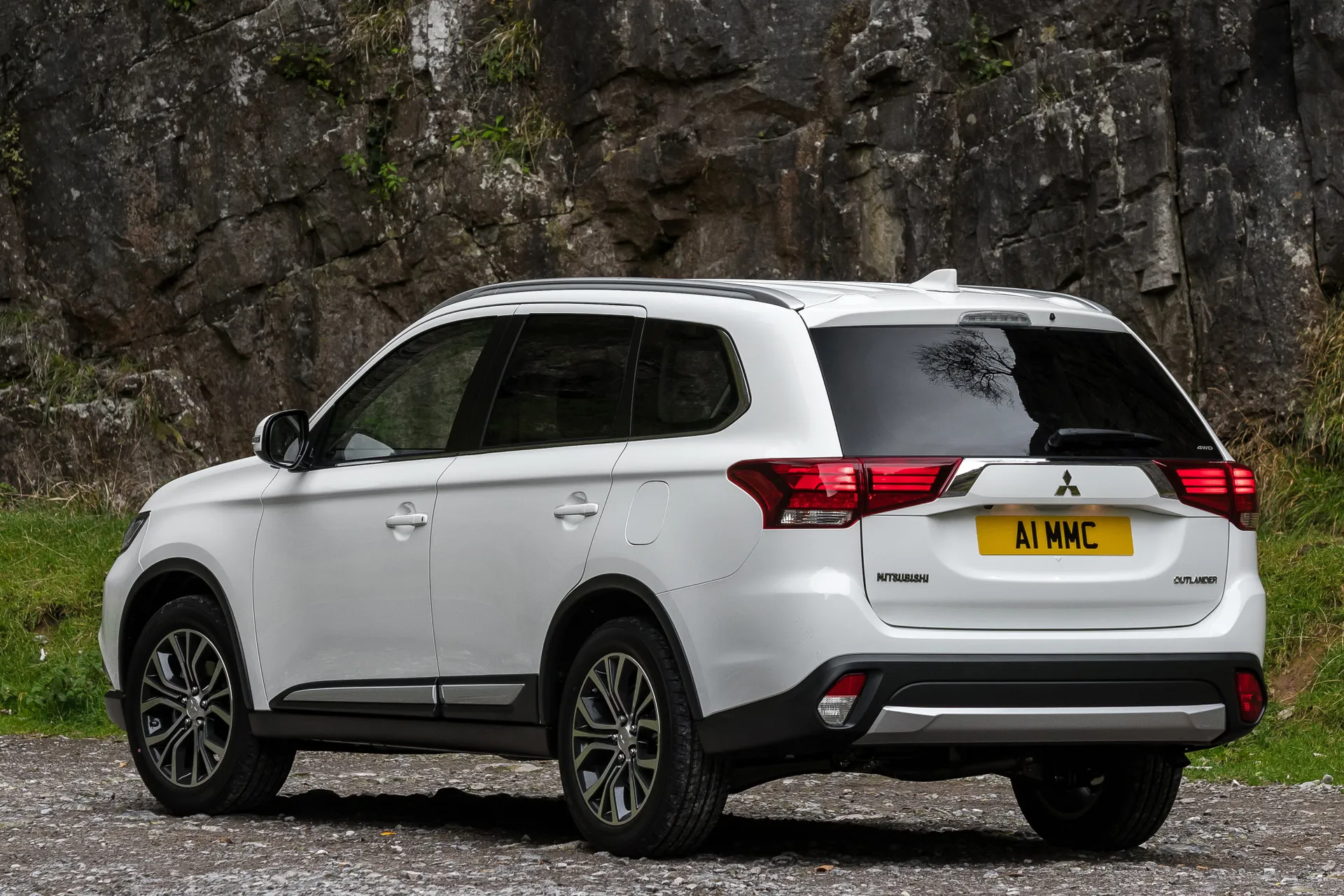
Buyers after a diesel Mitsubishi Outlander (which in many ways makes more financial sense than the later petrol model) will have to try and navigate Mitsubishi’s old trim structure. We'd go for a low-mile auto in ‘3’ grade to get the smoothest driving experience and best selection of equipment.
At the bottom end of the market, a 2013 Outlander diesel in a lower spec with average mileage will set you back from around £5000. More desirable specs push the price up a bit, but not by much. Later facelifted models start from about £8500. 2018-on petrol models start at £13,000, and are best avoided as a result.
As you'd expect, the hybrids command a premium over the diesel models. We did find some early models with over 150,000 miles from as little as £5000, but we'd recommend paying a bit more for a lower mileage version with some life left in those batteries. £12,000 will get you in a 2018 facelifted model, with last-of-the-line 2021 versions costing around £23,000.
Trim levels and standard equipment
The Mitsubishi Outlander is a real survivor. So much so in fact that during its lifetime Mitsubishi gave it cosmetic surgery not once but twice, and rearranged the trim structure each time it did so; gradually adding more kit.
A good rule of thumb if you're buying used is to ignore any letters in the trim name and look at the numbers. The higher the digit (2, 3, 4) the more equipment you'll get. Avoid the basic Mitsubishi Outlander 2, and it'll have all the kit you need.
Later top-spec Mitsubishi Outlander Exceed versions came with navigation, a 360º parking camera, heated leather seats, and blind spot monitors, to go with the climate control, keyless entry and start and reversing camera that are fitted to the entry-level Mitsubishi Outlander Design specification.
The Design also has an 8.0-inch touchscreen infotainment system featuring Android Auto and Apple CarPlay smartphone integration, DAB radio, cruise control, and 18-inch alloy wheels to boot.
If you step up to the Exceed, you get full LED headlights and a powered tailgate. Since the Outlander trades on its value for money though, we'd stick with the most affordable version and pocket the extra cash instead.
Mitsubishi is another Japanese brand that loves a special edition. The Mitsubishi Outlander Juro, Black and Keiko editions almost invariably add new paint or trim options, but no meaningful spec bumps.
Ask the heycar experts: common questions
Is the Mitsubishi Outlander a good car?
Does the Mitsubishi Outlander come with four-wheel drive?
What are the differences between the Outlander PHEV and the standard car?
Where is the Mitsubishi Outlander made?
How reliable is a used Mitsubishi Outlander?
Get our latest advice, news and offers
Keep me updated by email with the latest advice, news and offers from heycar.
By submitting you agree to our privacy policy
